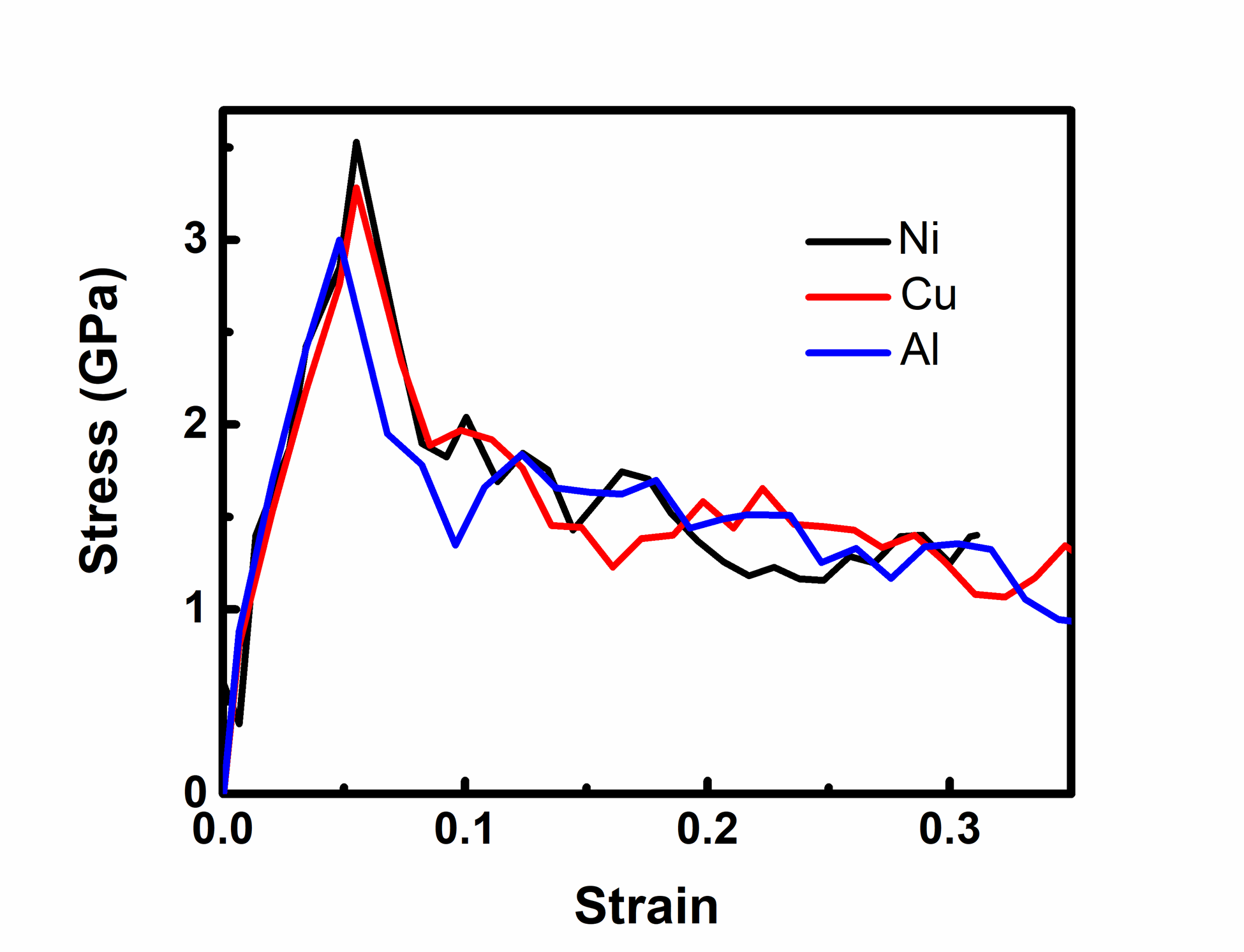Atomistic Simulation of the Effect of Temperature on Mechanical Properties of some Nano-Crystalline Metals
Keywords:
molecular dynamics, tensile deformation, ductility, nanocrystalline metals, plasticityAbstract
For materials with high ductility, malleability and conductivity, temperature will have significant impact on the material properties. This is especially true for pure elemental metals which have a wide range of applications due to their ultrahigh strengths. Recently, the study of damage mechanism at the nano- and micro level has attracted a significant interest and research. However, the current understanding of deformation mechanisms in nanocrystalline metals in relation to atomic structure and behavior is insufficient. In this study, atomistic simulation of uniaxial tension at nano-scale was performed at a fixed rate of loading (500 ms^-1) on some nano-crystalline face centered cubic metals (Al, Cu, and Ni), to study the nature of tensile deformation at different temperatures using the embedded-atomic method (EAM) potential function. The simulation results show a rapid increase in the stress up to a maximum value followed by a sharp drop when the nanocrystal fails by ductile dislocation. The drop in the stress-strain curves can be attributed to the rearrangement of atoms to a new or modified crystalline structure. Additional simulations were run to study the effects of temperature on the stress-strain curve of nano-crystals. The result shows that increasing temperature weakens the ductility of these nanomaterials. In this investigation, the strain corresponding to yielding stress is observed to be lower with increasing temperature. Finally, the evolution of crystalline microstructure during the entire tensile process was investigated. The atomistic simulation result of tensile deformation at nanoscale obtained in this study agree with plasticity phenomenon observed in macroscale.

Published
How to Cite
Issue
Section
Copyright (c) 2022 Isaiah Eze Igwe, Yusuf Tajuddeen Batsari

This work is licensed under a Creative Commons Attribution 4.0 International License.




